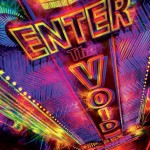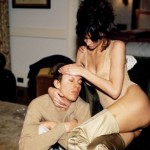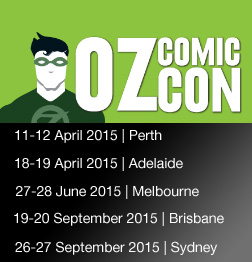 Listener Chris Bowen wanted to share his experiences with the movie, “Enter the Void”. Directed by Gaspar Noé and written by Gaspar Noé (with the help of Lucile Hadzihalilovic). The film stars Nathaniel Brown, Paz de la Huerta, Cyril Roy, Olly Alexander, Masato Tanno and Ed Spear.
Listener Chris Bowen wanted to share his experiences with the movie, “Enter the Void”. Directed by Gaspar Noé and written by Gaspar Noé (with the help of Lucile Hadzihalilovic). The film stars Nathaniel Brown, Paz de la Huerta, Cyril Roy, Olly Alexander, Masato Tanno and Ed Spear.
Chris Bowen Writes:
To say that Gaspar Noé has a controversial reputation as a film maker is a gross understatement. His first feature-length film, “I Stand Alone” (1998) dealt with issues of incest, violence and sexual abuse and was a down and dirty film featuring what could only be described as the most unlikeable anti-hero in modern filmmaking. His second effort, “Irreversible” (2002) polarised audiences globally, mostly due to the fact that during the course of the first thirty minutes he committed to film two of the most horrifically violent and graphic sequences in film history. That said, buried within both films were art house sensibilities peppered with a perverse beauty and a glimmer, however faint, of humanity. Think David Lynch on an acid bender and you’d be close to Noé.
So it’s no surprise that when Noé annouced his third feature length outing “Enter the Void”, the cinematic world was fascinated, by and large, but held it’s collective breath in anticipation of what he might have come up with this time around. What lines will he cross this time? What will we be forced to endure?
If you believe the stuff on the Net in relation to the film, Noé has been working on various iterations of the script for many years and it took a long time (at least in general terms) to come up with his final vision for the film. The fact that Noé is a true artist is reflected in the number of different cuts that exist, or have existed since the film was first unleashed. I’ve counted at least three different cuts, possibly four. The cut I saw came in at around two and a half hours and from my understanding is the “definitive” version of the film despite the director himself cutting 30 mins from the original.
Let me summarise the premise before continuing. A young man, Oscar, living in Japan is living a troubled life. He has begun using hallucinogenic substances and has slowly descended from drug user to drug dealer. On his way to deliver drugs to a friend, he meets up with his friend, Alex who has lent him a copy of the Tibetan “Book of the Dead”. The book explains that when you die and your soul passes on, it floats through the ether reflecting on it’s path through life and then seeks a new body in which to be reborn. It’s convenient that Oscar has read the book, because the drug deal goes bad and he is shot dead by the police in a dirty bathroom in the back of a club shortly after the drug deal gets underway; this is the first twenty or so minutes into the film.
 For this part of the film, we see the entire sequence through the eye’s of Oscar in first-person, even down to the camera flicking as Oscar blinks. We see him tripping when he gets high. We see him panic and try to flush is drug stash down the toilet to avoid being busted. When Oscar talks, the audio sounds like it’s muffled through Oscar’s own ears to simulate the viewer being inside Oscar’s head. It’s a very effective technique and one that lulls the viewer into an almost dream-like state as we embody Oscar along his path to his demise. We’ve seen dancing, swirling, insane camera techniques from Noé before in “Irreversible” but “Enter the Void” takes this technique to new extremes.
For this part of the film, we see the entire sequence through the eye’s of Oscar in first-person, even down to the camera flicking as Oscar blinks. We see him tripping when he gets high. We see him panic and try to flush is drug stash down the toilet to avoid being busted. When Oscar talks, the audio sounds like it’s muffled through Oscar’s own ears to simulate the viewer being inside Oscar’s head. It’s a very effective technique and one that lulls the viewer into an almost dream-like state as we embody Oscar along his path to his demise. We’ve seen dancing, swirling, insane camera techniques from Noé before in “Irreversible” but “Enter the Void” takes this technique to new extremes.
Once Oscar’s soul leaves his body, we travel around as his soul with the camera whirling, swirling and dancing around Japan from scene to scene, passing through walls, jumping around through a disjointed timeline. Sometimes we, as his soul, enter pure light and spend a bit of time bouncing around in some weird “dream world”. The effect is intoxicating. To give away more of the story here would be spoiling the experience, but suffice to say that the rest of the film takes place within Oscar’s soul as told by the Book of the Dead’s perspective on what happens after death. Oscar re-experiences his life, weaving back and forth through time; childhood, adulthood, back and forth and the events leading up to the first thirty minutes of the film and the drug deal gone bad. There is a reason that Oscar’s come to be in the predicament that he is in and we get to relive it with him. Some parts of the film we spend with the camera directly behind Oscar’s head; we rarely get to see his face but when we do, Noé has a reason. I get the distinct impression Noé has a reason for everything.
We also meet Oscar’s sister Linda. Linda is also living in the same city and is employed as a stripper (and a little bit more we think). The dynamics of Linda and Oscar’s relationship become apparent as Oscar’s soul relives his life after departing his body; the relationship between the two is arguably the most important theme in the film, because again, there is good reason why the two have arrived in the position that they are in. Oscar watches over his sister. One of the most heart-wretching scenes in the film is early on; Oscar’s soul leaves his recently dead body and is floating around in the ether (The “void”). His friend Alex is calling Linda on his mobile phone to tell her that her brother is dead. Her mobile phone rings but Linda is too engaged in sexing up her Japanese boyfriend and the call from Alex goes to voicemail. The message light on the phone blinks madly while Noé lets us watch a very long sex scene and then some mundane Linda stuff before she finally remembers she has a message and retrieves it. Anyone who doesn’t feel her heartbreak when this scene concludes probably has no heart themselves.
Noé pours emotion out onto the screen. His world is a dirty, decrepit environment but underneath, as a viewer, we can see the beauty. Unlike his previous work, the violence and themes in the film seem a little tamer; this is a film about relationships; not about brain-numbing violence and the effects of violence. That said, the themes in the film are confronting like much of his work; some of the themes are “suggested” quietly rather than spelled out but they are there nonetheless and no astute viewer will miss what he is getting at, however subtle the queues.
So is this a film worth watching? Yes. This is a film that should be watched by anyone with an appreciation for avant garde, art house or renegade filmmaking. I’ve never seen or experienced anything quite like it before and I suspect I probably won’t until Noé’s next venture. The credit sequence is one of the most amazing credit sequences I’ve seen. The film should be watched at high volume, lights out, and a spare two and a half hours are required because it’s best experienced in one viewing regardless of it’s length.
– Chris Bowen
__________________________________________________
‘Reader Reviews’ are the opinions from fans and don’t necessarily reflect the opinion of Geek Actually (the site geekactually.com or the podcasts Film Actually or Geek Actually). They are presented here as an opportunity for fans to have their voice. Geek Actually won’t present inflammatory or offensive material but if you have a review (tech or film) you would like to share and it is 100% your writing, send it to feedback@geekactually.com and we will consider it for posting on the site. All decisions on what gets posted here (and any clean up editing) are up to the editors of GeekActually.com.










1 comments
Where is that picture from? Doesn’t really looks like it’s from Enter the Void.